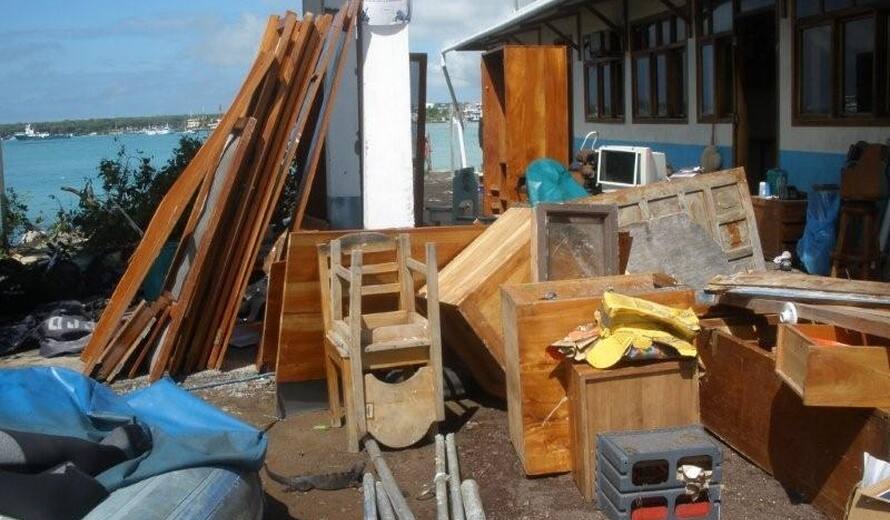Rapid Response Facility Supports Post Tsunami Recovery in Galápagos
The devastating March 11th earthquake that struck the coast of Japan created a powerful tsunami that ravaged the coastline and brought tragedy to thousands of people. No World Heritage sites were affected in Japan and the tsunami spread rapidly across the Pacific during the course of the day. Properly warned, the people of Galápagos (13,000 km from Japan) headed for high ground as a series of high waves, more akin to rapidly rising and falling tides, swept past the islands late that afternoon. In the town of Puerto Ayora, the tides rose to 1.7 metres above their normal high-tide levels and inundated coastal areas, causing significant water damage to buildings located close to shore, and to their interiors.
The marine conservation centre at the Charles Darwin Foundation's (CDF) research station, located just outside of town, were seriously damaged by the high water. Equipment and materials were largely destroyed putting a halt to all marine conservation research capacity at the CDF.
The CDF, with support from the Galápagos National Park Service, submitted a request to the Rapid Response Facility for financial help in quickly re-establishing their capacity to carry out marine conservation work. They emphasized the need to carry out an inventory of the tsunami's impacts on coastal ecosystems in the islands in an effort to inform potential management responses at the Galápagos National Park service. The inventory needs to be done as soon as possible - hence the reliance on the RRF. Their request was received on 22 March, and a decision was taken on 4th April for a $30,000 grant designed to help re-establish the CDF's marine conservation centre capacity, and to support the field inventory of tsunami impacts. For more information on the RRF, click here .


